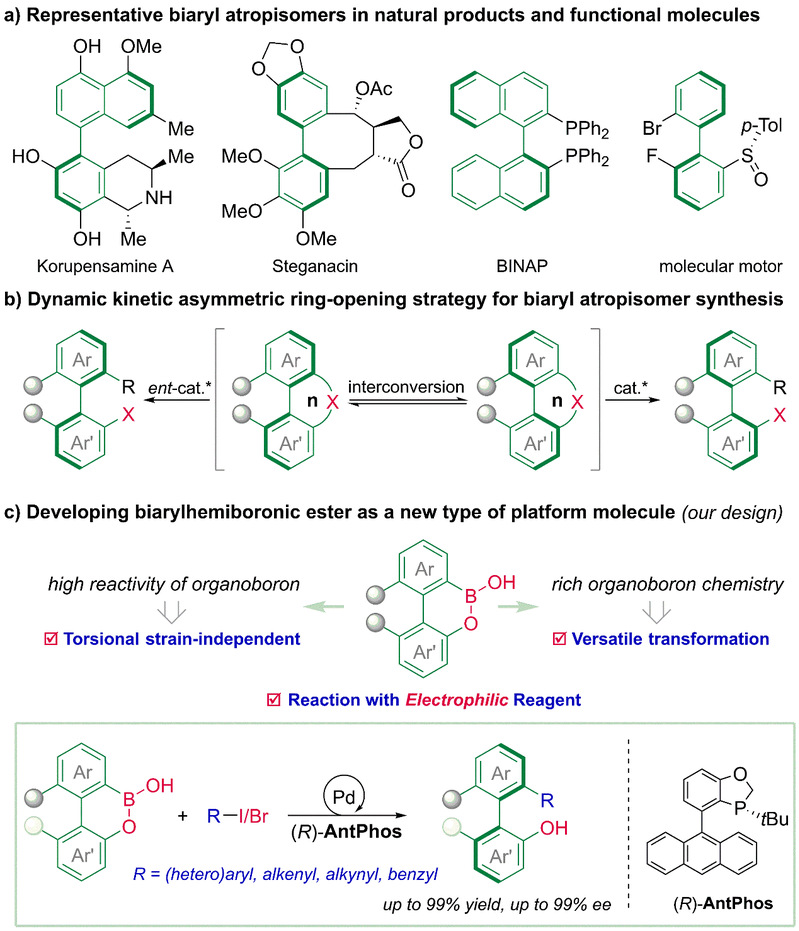Recently, a research article entitled “Developing Biarylhemiboronic Esters for Biaryl Atropisomer Synthesis via Dynamic Kinetic Atroposelective Suzuki−Miyaura Cross-Coupling” from Dou lab has been published in Journal of the American Chemical Society (J. Am. Chem. Soc. 2024, 146, 6283-6293). Yiming Yang (master student from School of Science) and Changhui Wu (PhD student from School of Science) are the co-first authors, and Prof. Dou Xiaowei is the corresponding author.
Axially chiral atropisomers arise from restricted rotation around an axis due to steric hindrance or electronic effects. Axially chiral biaryl scaffolds, a class of representative atropisomers, are widely found in natural products, bioactive molecules, privileged ligands or catalysts, and molecular machines. However, stable axially chiral biaryls require multiple and bulky substituents attaching to the ortho-positions of the chiral axis, making the asymmetric synthesis of this type of chiral structures highly challenging. Therefore, development of new reagents and new methods for the efficient and precise synthesis of those axially chiral structures has emerged as a research frontier in organic synthetic chemistry.
The catalytic asymmetric ring-opening reaction of configurationally labile biaryl reagents provides an important approach to the synthesis of axially chiral biaryl structures. However, the existing cyclic biaryl reagents still suffer from issues such as the lack of complementary reactivity, restricted structure, and limited applicable reactions. The properties of organoboron reagent match well with the demands for new cyclic biaryl reagent. With this property-demand matching as a new breakthrough point, the research group designed biarylhemiboronic esters as a new type of biaryl reagents to solve the problems. In this study, the research group introduce biarylhemiboronic ester as a new type of bridged biaryl reagent for asymmetric synthesis of axially chiral biaryl structures, and the palladium-catalyzed asymmetric Suzuki–Miyaura cross-coupling of biarylhemiboronic esters is developed. This dynamic kinetic atroposelective coupling reaction exhibits high enantioselectivity, good functional group tolerance, and a broad substrate scope. The synthetic application of the current method is demonstrated by transformations of the product and a programmed synthesis of chiral polyarene. Preliminary mechanistic studies suggest that the reaction proceeds via an enantio-determining dynamic kinetic atroposelective transmetalation step.

Scheme 1. Design and Reaction Development of Biarylhemiboronic Esters
The study is supported by the Natural Science Foundation of Jiangsu Province (BK20200080).
Link to the article: https://pubs.acs.org/doi/10.1021/jacs.3c14450